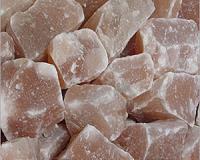 |
Los Angeles (AFP) March 17, 2011 The United States is boosting radiation monitoring on the West Coast and Pacific territories, as officials forecast that low levels could be detected in California by Friday. While authorities say they do not expect harmful levels, the Environmental Protection Agency (EPA) is sending the monitoring units to Alaska, Hawaii and Guam to boost an existing network, said an official Thursday. Speaking on condition of anonymity, the official stressed that the move is precautionary. "We don't expect any significant amounts of radiation," he said, adding that the EPA was expected to brief reporters later in the day. The US western states of California, Oregon, and Washington State have also been monitoring for any increase in radiation levels from Japan's Fukushima nuclear power plant, damaged by last Friday's earthquake and tsunami. California's Emergency Management Department, meanwhile, noted that California could detect heightened radiation as early as Friday. The forecast, by the UN's Comprehensive Nuclear Test Ban Treaty Organization, "indicates that monitoring stations in Southern California may be able to detect extremely low levels of radiation late Friday," it said. "This projection is based on patterns of Pacific winds at the time of the forecast and is likely to change as weather patterns shift," it added. It added that if a radioactive plume moved across the Pacific at its current strength, "it may not be detectable and would pose extremely minor health consequences even if trace amounts are detected." Hawaii is some 4,000 miles (6,500 km) from Japan, while the California coast is some 5,500 miles (8,800 km). California's emergency department also noted that the US Nuclear Regulatory Commission expects no harmful levels of radioactivity to reach the United States from Japan "due to the significant distance between the two countries." President Barack Obama also sought to reassure Americans Thursday, saying: "We do not expect harmful levels of radiation to reach the United States, whether it is the west coast, Hawaii, Alaska or US territories in the Pacific." The main US manufacturer of potassium iodide pills, which can protect against the effects of radiation, ran out of supplies within hours of the Japanese earthquake, according to the company's boss. The decisions to deploy extra radiation monitoring units was made this week, according to the official, who gave no more details on when they would begin operating.
earlier related report
Share This Article With Planet Earth
Related Links Space Technology News - Applications and Research
 Chinese snap up salt amid Japan nuclear scare
Chinese snap up salt amid Japan nuclear scareBeijing (AFP) March 17, 2011 Chinese retailers on Thursday reported panic buying of salt, partly because shoppers believe it could help ward off the effects of potential radioactivity from Japan's crippled nuclear power plant. "Salt sold out early this morning," an employee with a branch of French supermarket chain Carrefour in Shanghai told AFP, declining to give her name. She said all the salt was snapped up withi ... read more |
|
| The content herein, unless otherwise known to be public domain, are Copyright 1995-2010 - SpaceDaily. AFP and UPI Wire Stories are copyright Agence France-Presse and United Press International. ESA Portal Reports are copyright European Space Agency. All NASA sourced material is public domain. Additional copyrights may apply in whole or part to other bona fide parties. Advertising does not imply endorsement,agreement or approval of any opinions, statements or information provided by SpaceDaily on any Web page published or hosted by SpaceDaily. Privacy Statement |